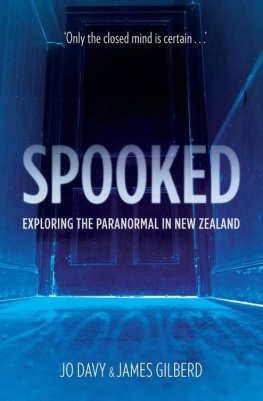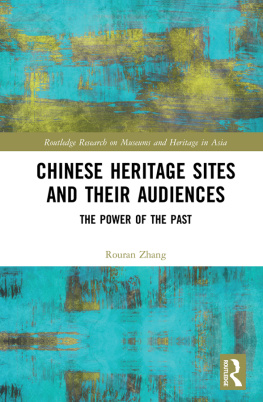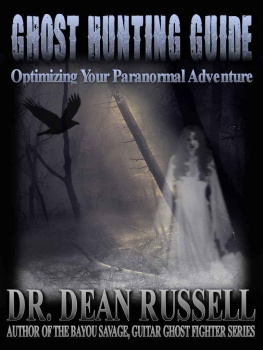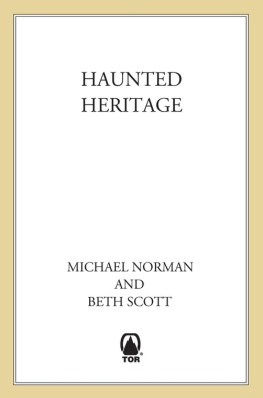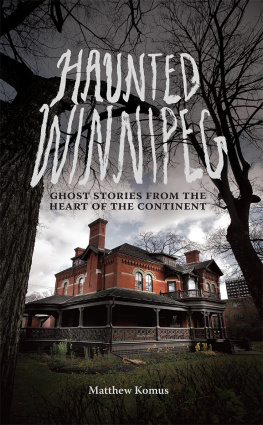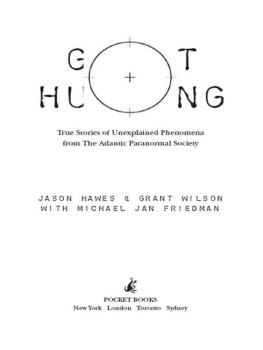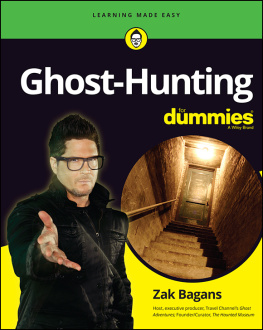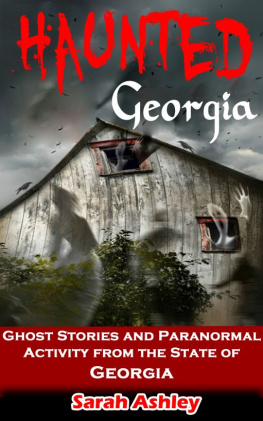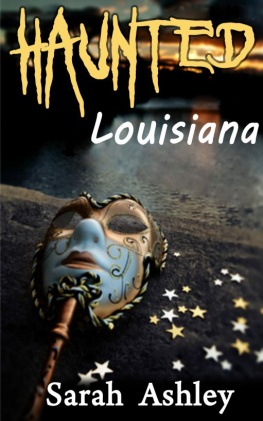
Haunted Heritage
Heritage, Tourism, and Community
Series Editor: Helaine Silverman
University of Illinois at Urbana-Champaign
Heritage, Tourism and Community is an innovative new book series that seeks to address these three interconnected areas from multidisciplinary and interdisciplinary perspectives. Manuscripts are sought that address heritage and tourism and their relationships to local community, economic development, regional ecology, heritage conservation and preservation, and related Indigenous, regional, and national political and cultural issues. Manuscripts, proposals, and letters of inquiry should be submitted to helaine@uiuc.eduhelain
The Tourists Gaze, The Cretans Glance: Archaeology and Tourism on a Greek Island,
Philip Duke
Coach Fellas: Heritage and Tourism in Ireland,
Kelli Ann Costa
Inconvenient Heritage: Erasure and Global Tourism in Luang Prabang,
Lynne Dearborn and John C. Stallmeyer
Heritage that Hurts: Tourists in the Memoryscapes of September 11,
Joy Sather-Wagstaff
Speaking for the Enslaved: Heritage Interpretation at Antebellum Planation Sites,
Antoinette T. Jackson
Faith in Heritage: Displacement, Development, and Religious Tourism in Contemporary China,
Robert J. Shepherd
Haunted Heritage: Cultural Politics of Ghost Tourism, Populism, and the Past,
Michele Hanks
Haunted Heritage
The Cultural Politics of Ghost Tourism, Populism, and the Past
Michele Hanks
First published 2015 by Left Coast Press, Inc.
Published 2016 by Routledge
2 Park Square, Milton Park, Abingdon, Oxon OX14 4RN
711 Third Avenue, New York, NY 10017, USA
Routledge is an imprint of the Taylor & Francis Group, an informa business
Copyright 2015 Taylor & Francis
All rights reserved. No part of this book may be reprinted or reproduced or utilised in any form or by any electronic, mechanical, or other means, now known or hereafter invented, including photocopying and recording, or in any information storage or retrieval system, without permission in writing from the publishers.
Notice:
Product or corporate names may be trademarks or registered trademarks, and are used only for identification and explanation without intent to infringe.
Library of Congress Cataloging-in-Publication Data:
Hanks, Michele.
Haunted heritage : the cultural politics of ghost tourism, populism, and the past / Michele Hanks.
pages cm (Heritage, tourism & community ; 7)
Includes bibliographical references and index.
ISBN 978-1-61132-225-5 (hardback)
ISBN 978-1-61132-226-2 (paperback)
ISBN 978-1-61132-227-9 (institutional ebook)
ISBN 978-1-61132-657-4 (consumer eBook)
1. Haunted placesEnglandYork. 2. GhostsEnglandYork. 3. ParapsychologyInvestigation. 4. TourismSocial aspects. 5. Heritage tourism. I. Title.
BF1472.E53H36 2014
133.109428--dc23
ISBN 978-1-61132-225-5 hardback
ISBN 978-1-61132-226-2 paperback
Image of Whitby Abbey on title page by Archangel12 (Whitby Abbey) [CC-BY-2.0 (http://creativecommons.org/licenses/by/2.0)], via Wikimedia Commons
CONTENTS
T his project would not be possible without the support and contributions of a number of people. I am deeply indebted to the ghost tourists, ghost hunters, and paranormal investigators who participated in my research. Their kindness and generosity of spirit made this research possible, and their friendship and insights strengthened my understanding of the practices of ghost tourism. Many thanks to the tour producers and museum professionals who generously shared their time with me and allowed me to access their tours and events.
My mentors supported, encouraged, and guided me through the process of this research. Virginia Dominguez has offered intellectual guidance, mentorship, and inspiration since the very start of my academic career. Her support encouraged me to pursue this project. Jane Desmond and Matti Bunzl have generously shared their insights and wisdom with me. Helaine Silverman has championed this project and book from its beginning. I am extremely grateful for her intellectual support and practical encouragement throughout the research and writing process.
My friends and colleagues in the Department of Anthropology at the University of Illinois at Urbana-Champaign and the SAGES Program at Case Western Reserve University have kindly read and commented on drafts of this work and encouraged me to push forward with it. Many thanks to Tim Landry, Lauren Anaya, Lisa Nielson, Brad Ricca, Kelly St. Pierre, Amy Absher, Annie Pecastaings, and Barbara Burgess Van-Aken.
Many thanks to my family and friends. From collecting books of ghost stories for me to attending ghost walks, they have offered enthusiastic support and useful help throughout this project. Special thanks to Noreen Mahon, Thomas Hanks, Lucy Hanks, Mary Tressider, Karen Grant, Michael Parsonage, and Paul Carr.
Many thanks to Mitch Allen at Left Coast Press for his help throughout this process. I am also grateful to Jerryll Moreno for her wonderful copyediting.
Funding from the North American Conference on British Studies, Phi Kappa Phi, and the Departments of Anthropology at the University of Illinois at Urbana-Champaign and the University of Iowa supported the field research for this project.
L ocated between the Pennines, the North York Moors, and the Yorkshire Wolds is the city of York, reported by Ghost Research Foundation International in 2004 to be the most haunted city in the world. Some claim that 504 ghosts haunt the city (BBC 2004; Readicker-Henderson 2008); some ghost tourists suggest that this only scrapes the surface of its ghost population. Yorks most famous ghosts are the Romans who haunt the basement of the Treasurers House, the former home of Treasurer of the York Minster, the imposing Gothic cathedral in heart of the city. Like many, I first learned of the Roman ghosts on one of Yorks many ghost walks in the summer of 2006. After winding our way through the darkening streets of the city, I and other tourists traipsed after the tour guide to a stately home. There our guide stood in front of the homes gates and told us the story of Harry Martindale, an apprentice plumber, who saw something remarkable while working in the basement of the house in 1953.
Martindale was alone in the basement installing a heating system when he suddenly heard the sound of distant music. He found this unusual because the walls of the basement were quite thick, and he had never heard music before. Assuming it was just a loud radio nearby, Martindale continued his work. The music seemed to grow closer though. Suddenly, tired-looking horses and a group of men dressed in unusual clothing emerged out of the wall. The men and horses were only visible from the knees up; Martindale noticed that they seemed to walking on their knees. They did not look at Martindale or seem to notice his presence. They walked across the room and then vanished into the opposing wall. Afraid that people would think he was crazy, Martindale did not immediately share his story with anyone; he abandoned plumbing and became a York police officer.


